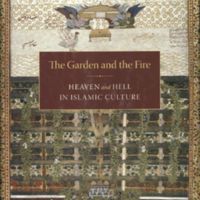The Garden and the Fire: Heaven and Hell in Islamic Culture
Dublin Core
Title
The Garden and the Fire: Heaven and Hell in Islamic Culture
Description
Provides an analysis of how visions of the Garden and the Fire, or Heaven and Hell, within Sunni Islam changed between the seventh and thirteenth centuries, and looks at how Muslims used images to represent the Garden on Earth from the seventh to the nineteenth century.
Islamic conceptions of heaven and hell began in the seventh century as an early doctrinal innovation, but by the twelfth century, these notions had evolved into a highly formalized ideal of perfection. In tracking this transformation, Nerina Rustomji reveals the distinct material culture and aesthetic vocabulary Muslims developed to understand heaven and hell and identifies the communities and strategies of defense that took shape around the promise of a future world.Ideas of the afterworld profoundly influenced daily behaviors in Islamic society and gave rise to a code of ethic
Islamic conceptions of heaven and hell began in the seventh century as an early doctrinal innovation, but by the twelfth century, these notions had evolved into a highly formalized ideal of perfection. In tracking this transformation, Nerina Rustomji reveals the distinct material culture and aesthetic vocabulary Muslims developed to understand heaven and hell and identifies the communities and strategies of defense that took shape around the promise of a future world.Ideas of the afterworld profoundly influenced daily behaviors in Islamic society and gave rise to a code of ethic
Creator
Nerina Rustomji
Publisher
New York : Columbia University Press
Date
2008
Table Of Contents
The garden, the fire, and Islamic origins -- Visions of the afterworld -- Material culture and an Islamic ethic -- Otherworldly landscapes and earthly realities -- Humanity, servants, and companions -- Individualized gardens and expanding fires -- Legacy of gardens -- Epilogue.
Text Item Type Metadata
Original Format
Book
Citation
Nerina Rustomji, “The Garden and the Fire: Heaven and Hell in Islamic Culture,” Humanities Hub, accessed December 6, 2025, https://humanitieshub.sdsu.edu/omeka/items/show/1849.

